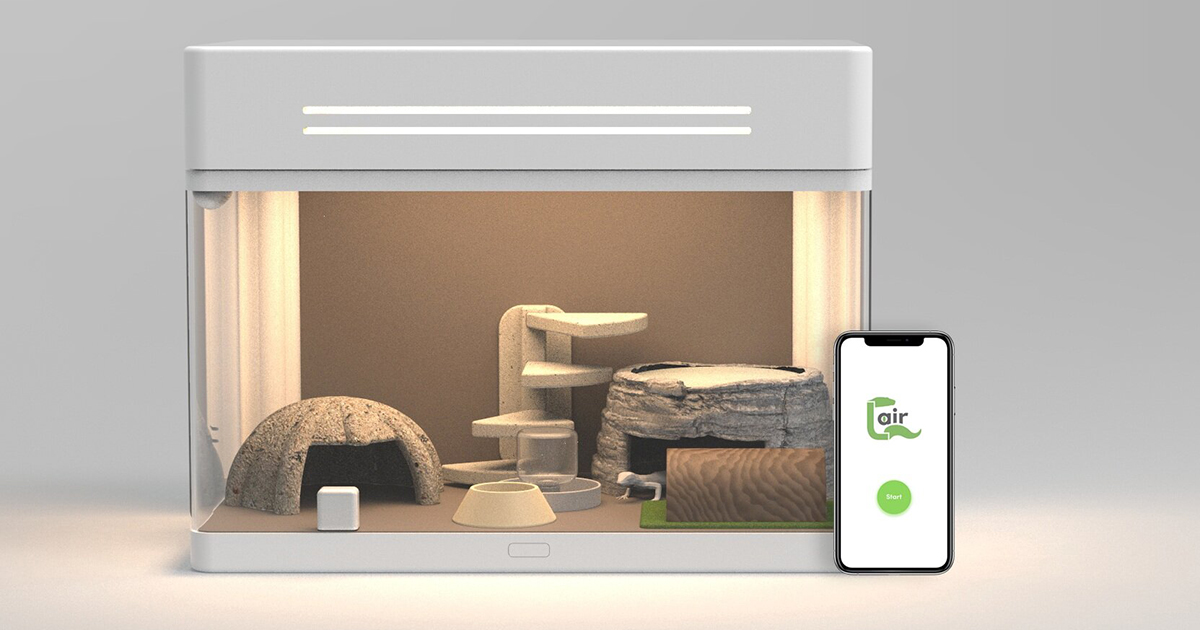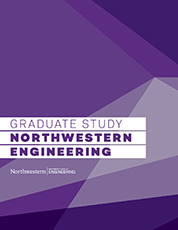Designing a New Lair for Pet Reptiles
Yifan Wu (EDI '20) brought together a passion for reptiles and knowledge learned in Northwestern's Engineering Design Innovation (EDI) program to create a state-of-the-art smart home habitat for pets.

When Yifan Wu (EDI '20) was a young boy, he was fascinated by reptiles. Their unique look drew him in, and he loved how they resembled dragons and dinosaurs. Some people might feel uneasy at the sight of reptiles, but not Wu.
Wu never had a pet reptile for himself, but as he grew older, he learned more about obstacles and challenges reptile owners face, including the need to create a unique home for the pet and the sometimes-difficult care that is needed. As Wu considered a thesis project topic to complete his time in Northwestern's Engineering Design Innovation (EDI) program, he turned to his passion.
Through conversations and his own research, Wu found that reptile owners want the welfare of their pet to be their top priority, but that is often compromised by the difficulty of care-taking, a lack of connection, and limited choices in habitats. He saw the opportunity to use technology to make for happier human-reptile relationships by providing effortless caring and interactive experiences, while also offering a safe and enriching environment for the animals.
"Throughout the caring process, reptile owners are on their own," Wu said. "Everything is figured out by doing it yourself. There simply is not enough support. That is why I wanted to change the situation and bring joy to the relationship."
With that thought in mind, Wu created Lair, a smart home system built for reptiles with conveniences for humans. It allows for automation of daily tasks and lets reptile owners be carefree wherever they are. Lair provides easy setup, integrated hardware, smart environment and lighting control, and a camera system.
Wu began his project by conducting secondary research that included investigating what resources already existed for reptile owners. He drew inspiration from how other animals are cared for and how zoos and animals view best practices for keeping reptiles. In order to understand pain points and potential opportunities, he fully immersed himself in the caring process by acquiring a pet leopard gecko named Night Fury. Night Fury proved to be an invaluable contributor to the project.
Wu followed a double-diamond model for his research. The first quarter working on Lair was spent exploring opportunities and then converging on an opportunity statement. The second quarter began with him brainstorming possible concepts and concluded with his design solution.
Throughout the process, Wu learned to appreciate the human-centered lens he developed in EDI, although in this case, he also needed to take an animal-centered design approach.
"Always start with the user and figure out the real pain points and needs," he said, "so the design can solve real problems."
Wu came to better understand the value in repeatedly designing, prototyping, and testing a solution. He was also surprised to discover the importance of storytelling when it comes to pitching a new product or idea.
"For me, the story of a joyful relationship between human and reptile is the unique experience I looked to create," he said. "Lair is human-centered, but also reptile-centered. This narrative is what I carried all the way through the project."
Looking back on the experience, Wu is proud of how he was able to incorporate many of the lessons he learned during his time in EDI. He also is excited to see the value in being aspirational, whether it's about developing a new type of home for a pet or coming up with a way to cure an incurable disease.
"Caring for reptiles has changed so much, and now with all the technologies available, the experience can be elevated to another level," he said. "It's the same with a lot of other industries. For designers, it is important to know what is at our hands and make full use of these tools to create better products."
This post is part of a series of stories that examines EDI thesis projects.

